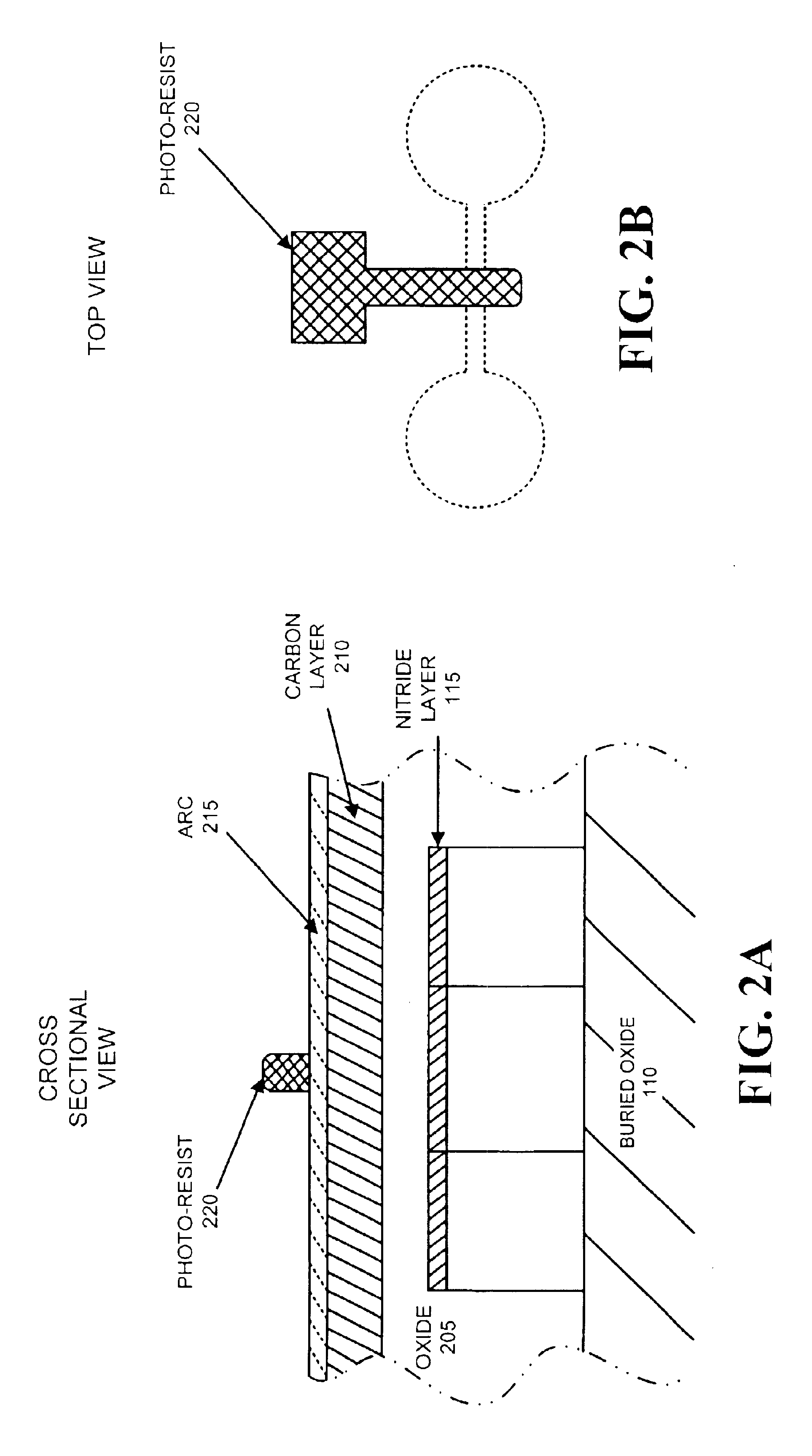Finfet gate formation using reverse trim of dummy gate
a reverse trim and gate technology, applied in the field of transistors, can solve the problems of limited difficult, if not impossible, scaling of existing bulk mosfet devices below 0.1 m process generation, etc., and achieves wide photo margin, wide photo margin, and increased printing and patterning ability.
- Summary
- Abstract
- Description
- Claims
- Application Information
AI Technical Summary
Benefits of technology
Problems solved by technology
Method used
Image
Examples
Embodiment Construction
The following detailed description of the invention refers to the accompanying drawings. The same reference numbers in different drawings may identify the same or similar elements. Also, the following detailed description does not limit the invention. Instead, the scope of the invention is defined by the appended claims.
Consistent with the present invention, a reverse trim process for creating FinFET gates is provided that increases the ability to print and pattern small features of the FinFET gate. The reverse trim process enables formation of trimmed damascene gates that allow wide photo margins.
FIGS. 1A and 1B illustrate a FinFET fin channel and source / drain (S / D) 105 formed on a buried oxide layer 110 in accordance with an exemplary embodiment of the present invention. Fin channel and S / D 105 may be formed on buried oxide layer 110 using any conventional technique. Alternatively, fin channel and S / D 105 may be formed using the exemplary process described in co-pending applicatio...
PUM
 Login to View More
Login to View More Abstract
Description
Claims
Application Information
 Login to View More
Login to View More - R&D
- Intellectual Property
- Life Sciences
- Materials
- Tech Scout
- Unparalleled Data Quality
- Higher Quality Content
- 60% Fewer Hallucinations
Browse by: Latest US Patents, China's latest patents, Technical Efficacy Thesaurus, Application Domain, Technology Topic, Popular Technical Reports.
© 2025 PatSnap. All rights reserved.Legal|Privacy policy|Modern Slavery Act Transparency Statement|Sitemap|About US| Contact US: help@patsnap.com



